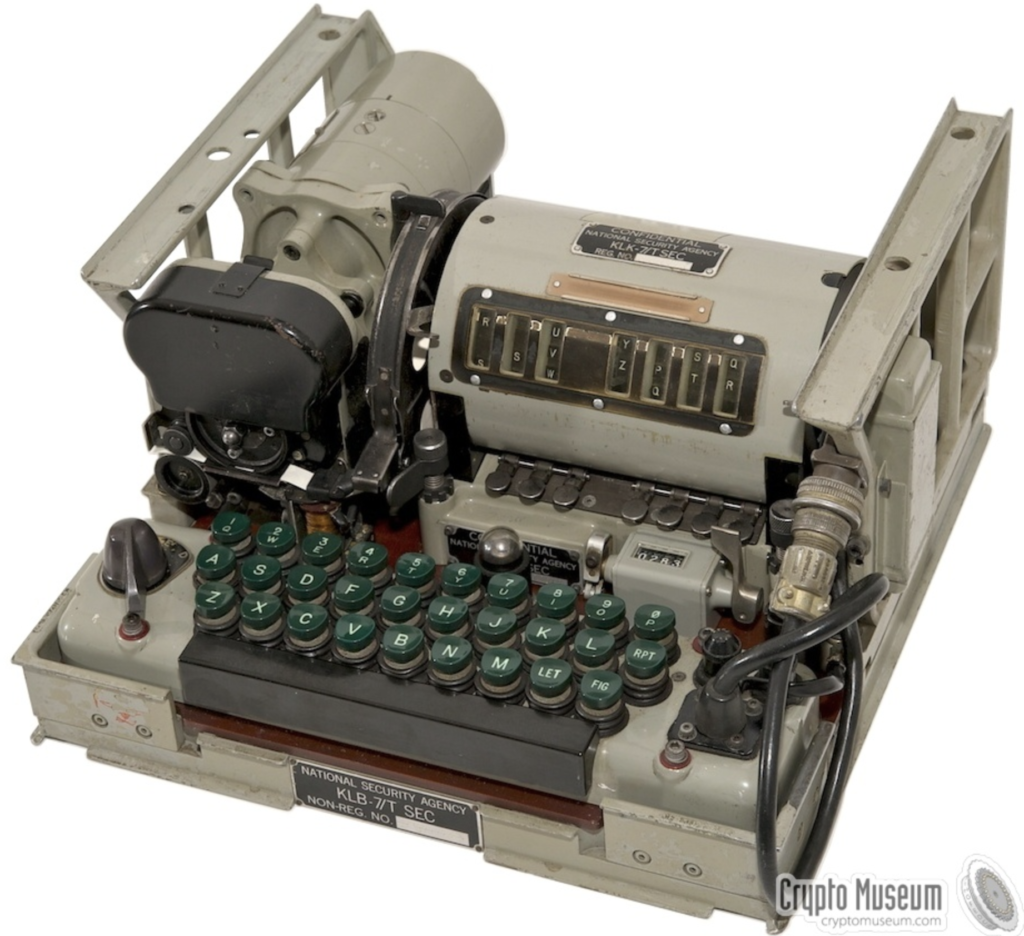KL7 – Who Remembers this Beast!

| KL-7 was an electro-mechanical rotor-based off-line cypher machine, developed by the National Security Agency (NSA) in the US. It was introduced in 1952 and served for many years as the main cypher machine of the US and NATO. It is relatively light-weight (9.3 kg) and is essentially a more advanced version of the German Enigma machine. It replaced the wartime SIGABA (ECM Mark II) and in some countries, such as the UK and Canada, also the CCM and the British Typex machines. The initial name for the machine was AFSAM-7, but changed to TSEC/KL-7 in the early 1960s. It is also known by key-procedure codenames ADONIS (high-level) and POLLUX (low-level). KL-7 was withdrawn from service in 1983. Unlike Enigma, the KL-7 has eight rotors, seven of which are moved in a complex irregular stepping pattern. The machines came in several variations and were used by the US Army, Navy and NATO for many years. They were also used for communication by Foreign Affairs. Unfortunately, KL-7 is still a classified item and only few of them have survived. Most machines that are on public display today, have been ‘sanitized’, and all wiring has been removed. Despite the secrecy surrounding the KL-7 and its history, the mystery is gradually being unravelled as the NSA releases more and more historical documents and researchers manage to uncover the technical details of the machine. As a result, a very realistic computer simulation (for Windows) of the KL-7 has been created in 2011 by crypto-historian Dirk Rijmenants in Belgium, and in 2013 a JAVA-based KL-7 simulator by MIT (US), both of which can be downloaded below. The KL-7 was introduced in the 1950s and remained in service well into the 1970s, when it was gradually phased out. In some countries, KL-7 machines were kept for special purposes and as backups for many years, until they finally were officially withdrawn from service in 1983. The last (unclassified) message was sent on 30 June 1983 by the Canadian Navy. KL-7 was replaced by a range of electronic machines, such as the KW-26, the KW-37, the KL-51 (RACE) and Aroflex. Reproduced from the Crypto Museum |

I know a lot of people got very frustrated with the KL7 but i usually found that some time spent for meticulous cleaning of rotors and contacts gave few problems in its operation
knew this beastie well, spent many a long hour locked in small rooms in Devonport, Philly and
Wellington idling away some of my youth
On Otago in 1965 I think for a time in Singapore while it was in use we had to do an internal ship patrol around the BWO and up to the EWO to make sure no one was recording the radiation from it. Do not remember that lasting long.
I have vivid memories of “The Beast” …. My first ship posting in Pussers was HMNZS Rotoiti (F625) back in 1962/63. I recall being down 60 south going around in circles doing the sea-air rescue McMurdo thingie in the rough as gutz Southern Antarctic Ocean, reading broadcast WV/ZLP most of the time. The worst was having to read upwards give-or-take 1000 word groupers, usually intelligence reports. The follow-on from that is arriving back in Dunedin and reading the Otago Daily Times which had editorials on some of the very same stiff that was classified secret that you recently “slaved” over reading on broadcast WV, then decrypting it! … time for a Tot I think!